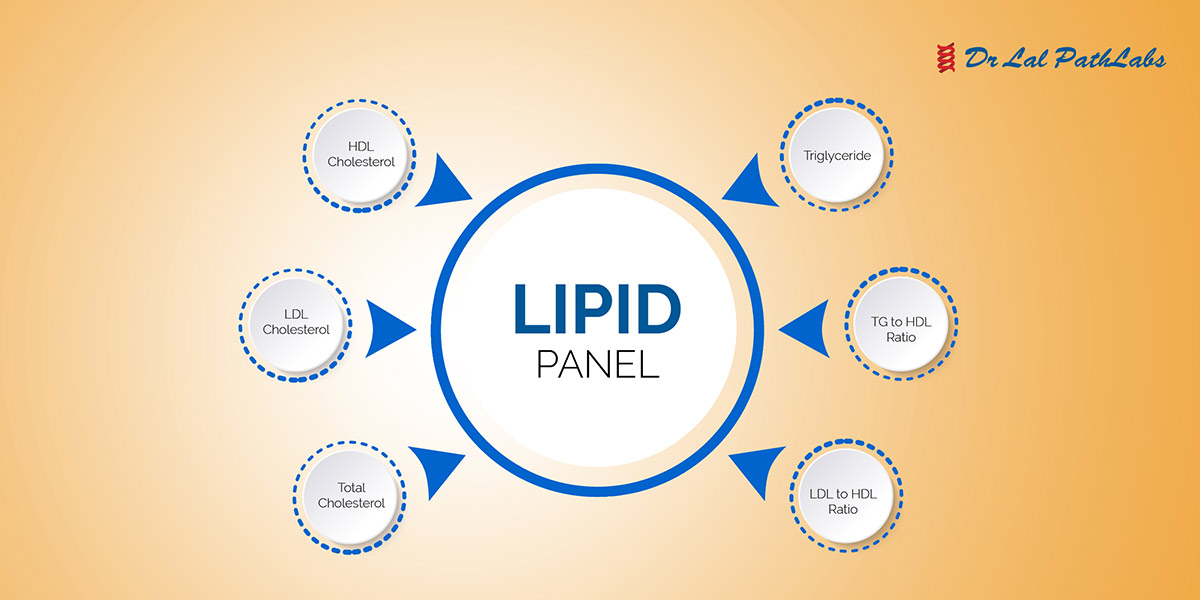Lipid Profile Test: Purpose, Procedure and Results
What is the Lipid Panel Test?
The Lipid Profile test, also known as Lipid Panel, is a blood test used to assess the risk of developing Cardiovascular disease (CVD) by measuring the amount and type of lipids (fats) in the blood. The test evaluates the levels of:
- Total cholesterol in the bloodstream.
- Low-density lipoprotein (LDL) cholesterol in the blood
- High-density lipoprotein (HDL) cholesterol in the blood
- Triglycerides are a type of fat stored in the body’s fat cells. Triglycerides may also affect the narrowing of the artery walls.

What is Cholesterol?
Cholesterol is a type of lipid present in the blood and produced naturally by the liver. Cholesterol is vital for forming cell membranes, certain hormones, and vitamin D.
Proteins carry cholesterol in the blood. When cholesterol and proteins combine, they’re called lipoproteins. There are two main types of cholesterol as below:
- Low-density lipoproteins (LDL) are often called “bad” cholesterol. It carries cholesterol to the arteries. If there is an excessive level of LDL cholesterol in the blood, it may build up on the artery walls, also known as cholesterol plaque. If the blood contains too much LDL cholesterol, it is known as high cholesterol. High cholesterol can result in many complications, such as:
- Heart attack
- Stroke
- High blood pressure
- Peripheral vascular disease
- Chronic kidney disease
- Chest Pain
- High-density lipoproteins (HDL) are often called “good” cholesterol. It helps return LDL cholesterol to the liver to be removed from the body and prevents cholesterol plaque from building up in the arteries.
When is the Lipid Profile test recommended?
The lipid profile test helps predict several risk factors. The doctors recommend a lipid profile test in the below cases:
- Age over 45 years
- Family history of heart diseases
- Overweight
- Unhealthy lifestyle
- Having diabetes or hypertension
How is the Lipid Profile test performed?
The Lipid Profile test may require you to fast 10-12 hours before the test. The blood is drawn from the vein and sent to the lab for testing.
How to interpret the results of the Lipid Profile test?
In order to assess the risk of heart disease and develop a course of action, the physician will use Lipid Profile test results. The test results may also be used to monitor the effectiveness of the treatment plan. The treatment plan may involve lifestyle changes such as diet, exercise, or medications.
Cholesterol levels are measured in milligrams (mg) of cholesterol per blood deciliter (dL). The ideal results for most adults are as stated below:
- LDL (Bad Cholesterol): 70 to 130 mg/dL, Lower the better.
- HDL (Good Cholesterol): 40 to 60 mg/dL, Higher the better.
- Total cholesterol: less than 200 mg/dL, Lower the better.
- Triglycerides: 10 to 150 mg/dL, Lower the better.
How often do you need the Lipid Profile Test?
The Lipid Profile test is recommended to be taken first between the ages of 8-11. It should then be repeated every five years, as children are also at risk of cardiovascular diseases due to genetic or lifestyle changes.
People above 45 should take this test every 1-2 years, and those above the age of 65 must take this test yearly.
What are the tips to prevent High Cholesterol?
Lifestyle changes can help prevent high cholesterol.
The following tips may help:
- Limit intake of saturated fats and trans fats such as red meat, organ meats, egg yolks, and high-fat dairy products
- Eat high-fiber foods, such as fruits, vegetables, and whole grains
- Avoid fast food and junk food, such as deep-fried foods
- Eat foods containing omega-3 fatty acids, such as salmon, walnuts, almonds, ground flax seeds, and avocados.
- Maintain a healthy weight
- Quit smoking
- Exercise regularly. Physical activity can lower LDL cholesterol and triglycerides and increase good high-density lipoprotein (HDL) cholesterol.
- Avoid excessive alcohol consumption.
- Manage stress. Chronic stress can increase LDL cholesterol levels and decrease HDL cholesterol levels.
Disclaimer:
This blog is for informational purposes only and should not be construed as advice or a substitute for consulting a physician. It is not a substitute for medical advice or treatment from a healthcare professional.













